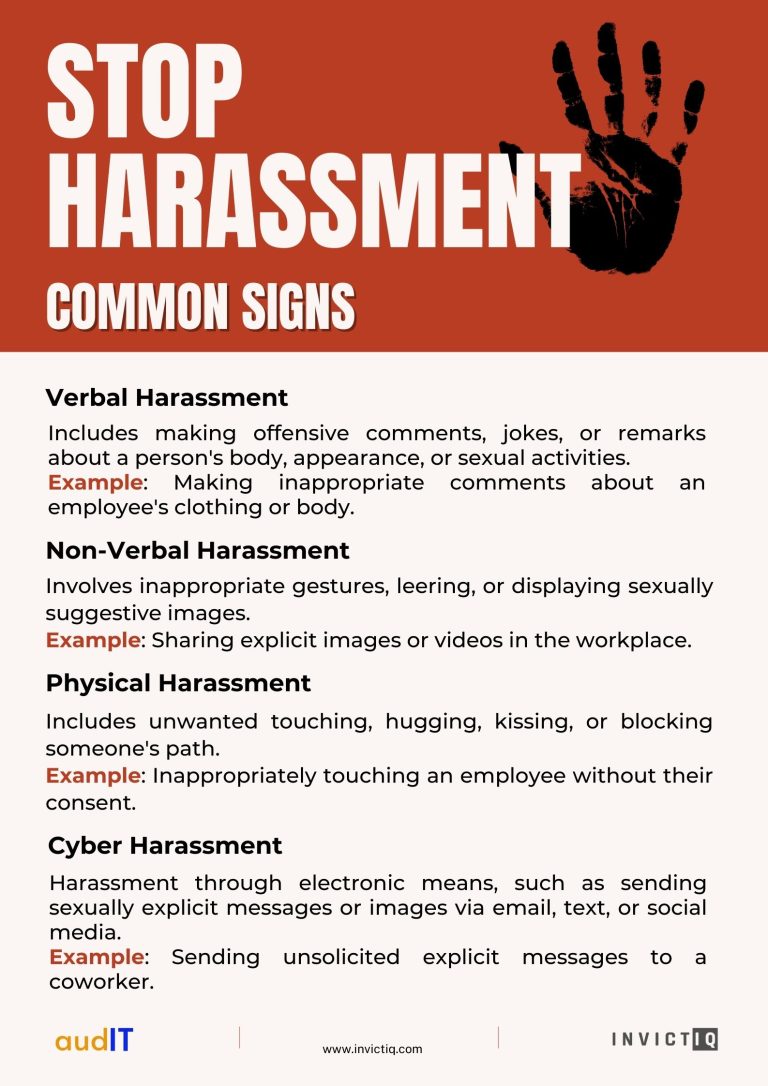@2021 invictIQ is a venture by Sprint Consultancy. All rights reserved. Privacy Policy.

The Worker Protection Act
by Mark Topps
The Worker Protection Act is an amendment of the Equality Act 2010 is a significant piece of legislation aimed at enhancing protections for employees against sexual harassment in the workplace and comes into place in October 2024.
With over 40% of workers feeling their workplace lacks adequate safety measures, more remote workers (homecare, courier, food delivery services etc), the new act aims to make substantial changes that and could not be timelier.
Employer Duties
Employers have a duty of care to protect their workers and will be legally liable for sexual harassment in the workplace if they have not taken reasonable steps to prevent it. There are a number of duties that employers will be expected to meet, including:
- Clear policies and procedures that specifically address sexual harassment, and that include timelines for responses, investigations etc.
- Training for all employees, which will cover how to recognise and prevent sexual harassment.
- Training for managers on how to handle complaints
- Promoting a zero-tolerance culture towards sexual harassment
- Implement various methods for employees to report harassment (hotline, online reporting tools, HR, anonymously etc)
- Support such as counselling or legal advice for those reporting harassment
- Ongoing monitoring and evaluation tools such as surveys, through supervision etc.
Common Signs of Harassment
- Verbal Harassment: Includes making offensive comments, jokes, or remarks about a person’s body, appearance, or sexual activities. Example: Making inappropriate comments about an employee’s clothing or body.
- Non-Verbal Harassment: Involves inappropriate gestures, leering, or displaying sexually suggestive images. Example: Sharing explicit images or videos in the workplace.
- Physical Harassment: Includes unwanted touching, hugging, kissing, or blocking someone’s path. Example: Inappropriately touching an employee without their consent.
- Cyber Harassment: Harassment through electronic means, such as sending sexually explicit messages or images via email, text, or social media. Example: Sending unsolicited explicit messages to a coworker.
Responding to Sexual Harassment Reports
- When an employee reports sexual harassment, listen attentively and take their concerns seriously.
- Ensure the safety and well-being of the victim by providing immediate support and assistance.
- Document the details of the complaint, including dates, times, locations, individuals involved, and the nature of the incident.
- Respect the privacy of the victim and maintain confidentiality throughout the investigation process.
- Provide access to confidential counselling and support services for victims and witnesses to cope with the emotional and psychological impact of harassment.
- Assure victims and witnesses that they will be protected from retaliation for reporting harassment and cooperating with the investigation.
- Maintain open lines of communication with victims and witnesses throughout the investigation process to provide updates and address any concerns.
- Harassment by a third party, such as a customer, client, patient, or supplier, should be treated just as seriously as that by a colleague.
Enforcement and Penalties
Employers who fail to take reasonable steps to meet the new act can trigger enforcement action from the Equalities and Human Rights Commission, with the following action/penalties potentially being taken:
- Compensation Uplift: Employment tribunals can increase compensation awards by up to 25% in cases where an employer is found to have neglected their duty
- Legal Accountability: Employers can be held legally accountable for failing to prevent harassment, which can lead to reputational damage and financial penalties
Sexual harassment in the workplace is unacceptable and unlawful. Everyone deserves a safe and respectful working environment where they can thrive professionally without fear of harassment or discrimination.
Recognising the signs of sexual harassment and knowing how to address it is crucial for creating a workplace culture that values dignity, respect, and equality for all.
Whether you’re an employer, an employee, or a concerned individual, the resources and contacts provided in this guide offer valuable insights and assistance to promote a harassment-free workplace.
Together, we can work towards creating workplaces that prioritise safety, respect, and equality, ensuring that everyone can contribute to their fullest potential without the barriers of harassment and discrimination.

Mark Topps is a social care leader who has worked in the care industry since 2004 and is currently working as a regional support manager. He regularly advocates, appearing on television, radio and podcasts and has started many campaigns for change in legislation and culture within the industry. Mark is the co-founder of The Caring View which is a social care podcast, YouTube show and free resource initiative for the sector. He also co-founded The Health and Social Care Club, which is an audio event hosted on LinkedIn. Mark is also the social media and marketing director at the National Association of Care and Support Workers.
Share
Sign up for our newsletter

